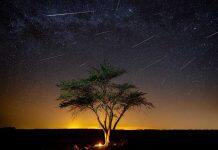Logged forests near regional and rural towns and settlements are at increased risk of increased fire severity, new research from The Australian National University (ANU) shows.


The study, published in Ecosphere, analysed the severity of Australia’s 2019-2020 bushfires by examining the amount of damage to vegetation.
Co-author Professor David Lindenmayer said weather had a large effect on the fires.
“However, forests also burned at very high severity when they were between 10 to 40 years old. Young forests regenerating after logging were particularly susceptible to very high severity fire,” he said.
“Our findings show there should be no logging near rural towns and other communities.
“At a time when the risk of extreme fire weather has risen 10 times since the 1960s, we must do everything possible to keep country people safe. Reducing the flammability of forests is crucial.”
Co-author Dr David Taylor said the study’s results mirrored studies conducted after the 2009 Black Saturday fires, where logged forests were also found to be at a greater risk of high severity wildfire.
“More and more research, not only in Australia but also from around the world, is showing that young forests are very flammable,” Dr Taylor said.
“I am extremely worried about how much young and highly flammable forest now occurs in much of Victoria and southern New South Wales.
“Much of this is a result of past fires and a long history of industrial logging.”
Professor Lindenmayer is calling for new technologies to help detect and extinguish fires as soon as they ignite.
“This will help save properties and lives,” Professor Lindenmayer said.
“New drone and detection capabilities can be a huge help in detecting and locating fires as they ignite.
“At the same time, we must more rapidly suppress any fires that do start, and control them when there is the best chance of suppression success.
“Again, technology is key to achieving this.”
Read the full study in Ecosphere.







































